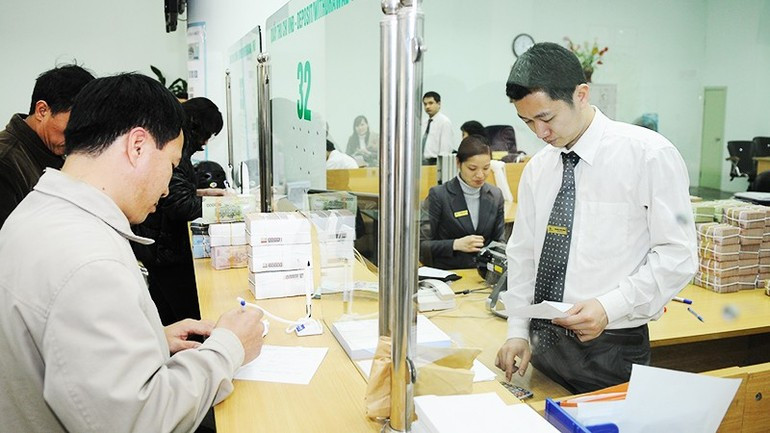Fostering substantive growth
The ongoing debate surrounding the removal of the credit growth cap is drawing significant attention from the financial sector, with two distinct viewpoints emerging: support for the policy, and concern over potential misallocation of capital. This raises a critical issue, rather than merely chasing growth figures, there is a pressing need to enhance the quality and efficiency of capital utilisation.

For over a decade, the credit room set by the State Bank of Viet Nam (SBV) for each bank has been one of the key instruments to control inflation, stabilise exchange rates, and manage money supply. Essentially, this mechanism acts as a form of credit market share quota, allocated by the regulator based on each institution’s capital adequacy, asset quality, and compliance with prudential regulations. However, maintaining credit room is now revealing numerous shortcomings.
Lingering concerns remain
Elaborating on these limitations, Nguyen Tu Anh, former Deputy Director of the SBV’s Monetary Policy Department, argued that the mechanism distorts market competition and creates difficulties for borrowers. He cited short-term loans (from three to six months) as an example: when the refinancing period comes, the bank announces that the room is full, causing businesses to be passive and creating difficulties in arranging capital in time.
According to Tu Anh, some banks treat credit quota allocation as a pre-set market share, reducing the need to compete for customers and, consequently, lowering incentives to cut interest rates. This partly explains why interest rates remain high despite the SBV injecting significant liquidity into the system. Because when market shares are fixed, banks see no need to lower prices to attract clients.
Nguyen Hoang Linh, Head of Research and Analysis at Vietcombank Fund Management (VCBF), fully agrees with this perspective and adds a viewpoint from the market. Eliminating the credit room would demonstrate that Viet Nam’s financial market operates with greater transparency and alignment with market principles.
“This would boost investor confidence, especially among foreign investors. Banks with strong capital bases, sound risk management, and high-quality customer portfolios would benefit from unrestricted growth potential. This is a critical factor at a time when many banks are planning to raise capital.”
Nguyen Hoang Linh, Head of Research and Analysis at VCBF
However, Linh also cautioned that in the context of concentrated risk within Viet Nam’s banking system, the absence of a sufficiently strong alternative regulatory tool could lead to capital misallocation, diverting credit flows into speculative “backyard” sectors such as real estate and the stock market, rather than productive business and manufacturing activities.
“This could overheat asset prices and fuel inflation. In fact, most economic crises originate from financial markets and property bubbles,” Linh warned.
Analysing these concerns further, expert Ha Vo Bich Van recalled the lesson from 2009–2010, when Viet Nam launched a stimulus package worth 143 trillion VND following the global financial crisis, together with subsidised lending at just 4% interest. As a result, credit soared over 37% in 2009, and inflation surged to 18.6% by 2011. The property and stock markets overheated and then collapsed. Many firms became heavily indebted and the SBV was forced to tighten credit and restructure the entire sector.
According to Van, current data shows that the on-balance-sheet non-performing loan (NPL) ratio at banks has already exceeded 4%. If including subprime loans (Group 2 debt) and bad debts sold to the Viet Nam Asset Management Company (VAMC), the actual figure could be as high as 7–8%. Meanwhile, businesses continue to face significant difficulties in accessing capital, highlighting a worrying reality: the quality of credit has not kept pace with its quantitative growth.

Quality-driven growth
In response to expert concerns, Pham Xuan Hoe, Secretary General of the Viet Nam Financial Leasing Association, stated that the SBV still possesses several regulatory tools beyond credit caps. These include compulsory bills, capital ratio buffers for medium- and long-term lending to avoid liquidity mismatch, and ratios of total mobilisation to equity capital. According to Hoe, given the SBV’s strong operational and technical capacity, lifting the credit cap is entirely manageable and “not something to be feared”.
Hoe further noted that Viet Nam’s credit/GDP ratio has not declined since 2010, but rather increased steadily — now reaching 134%, a level many institutions consider concerning. However, he argued that this ratio should be assessed within each country's specific economic context; for instance, China’s credit/GDP ratio exceeds 200%.
Recently, the SBV issued Circular No. 14/2025/TT-NHNN (dated June 30, 2025), which sets out specific regulations on capital adequacy ratios for commercial banks and branches of foreign banks. Accordingly, credit institutions are required to maintain three minimum capital adequacy levels.
Nguyen Quang Ngoc, Deputy Head of the Credit Policy Department at Agribank, remarked that the new regulation compels banks to accelerate the restructuring process, improve governance capacity, and strengthen financial resilience, including by increasing charter capital. At the same time, in order to meet risk-weighted asset requirements, it is likely that some banks will have to scale back lending in high-risk sectors. This is considered a necessary step in helping the banking system move closer to international standards, particularly the Basel III framework.
Additionally, Circular 13/2018/TT-NHNN still mandates that commercial banks must establish and maintain effective internal control systems to ensure safe and sound operations. These systems must comprehensively manage major risks, including credit risk, market risk, liquidity risk, and operational risk.
This indicates that the SBV is gradually implementing a cautious and methodical roadmap for credit regulation, paving the way towards the removal of the credit growth cap. However, according to experts, credit institutions themselves also need to proactively review and reassess their entire set of internal criteria, aligning them with the new regulations to clearly determine their actual position and capacity.
Nguyen Quoc Hung, Vice Chairman and Secretary General of the Viet Nam Banks Association, stated that through inspection activities, the SBV has initially identified certain “backyard” groups linked to credit institutions. However, thoroughly addressing the issue of cross-ownership remains a complex challenge, requiring a clear and phased roadmap.
From a broader perspective, the core issue does not lie in how many percentages points credit grows by, but in how that capital is allocated. Whether credit growth reaches 16% or 20% becomes meaningless if resources are not channelled to the right destinations and fail to generate real value for the economy. What matters now is not the pace of money injection, but the efficiency of every unit of capital released into the market.
A study by VCBF revealed that in the first quarter of 2025, credit flowing into the real estate sector surged by 7.5% — twice the overall credit growth of the entire system. From an investor’s standpoint, VCBF expressed concern that key sectors in need of priority support, such as industrial production, continue to face difficulties in accessing capital, while cash flows are overly concentrated into speculative channels, especially real estate enterprises.








